It is a scimitar-shaped estuary that joins the Bosphorus just at the point where that strait enters the Sea of Marmara, thus forming a peninsula the tip of which is “Old Istanbul” (ancient Byzantion and Constantinople). Its Greek and English names mean the same, but the significance of the designation “golden” is obscure, while its Turkish name Haliç simply means “estuary“. It has witnessed many tumultuous historical incidents, and its dramatic vistas have been the subject of countless works of art.
The Golden Horn is a flooded prehistoric estuary. It is 7.5 kilometers long and is 750 meters across at its widest. Its maximum depth, where it flows into the Bosphorus, is about 35 meters. It is today spanned by four bridges. Moving downstream, the first is the Haliç Bridge, literally Estuary Bridge. The former Galata Bridge was damaged by a fire in 1992; it was moved to the second position in pieces, re-assembled, and restored as the Eski Galata Bridge, literally Old Galata Bridge. The third one is the Atatürk (Unkapanı) Bridge. The current Galata Bridge was completed in 1994. A fifth bridge is currently under construction to connect the subway lines of the Istanbul Metro to the north and south of the Golden Horn.
History
The Golden Horn (Keras) forms a deep natural harbor for the peninsula it encloses together with the Sea of Marmara. The Byzantine Empire had its naval headquarters there, and walls were built along the shoreline to protect the city of Constantinople from naval attacks. At the entrance to the Horn on the northern side, a large chain was pulled across from Constantinople to the old Tower of Galata to prevent unwanted ships from entering. Known among the Byzantines as the Megàlos Pyrgos (meaning “Great Tower” in Greek), this tower was largely destroyed by the Latin Crusaders during the Fourth Crusade in 1204. In 1348 the Genoese built a new tower nearby which they called Christea Turris (Tower of Christ), now called Galata Tower.
There were three notable times when the chain across the Horn was either broken or circumvented. In the 10th century the Kievan Rus’ dragged their longships out of the Bosporus, around Galata, and relaunched them in the Horn; the Byzantines defeated them with Greek fire. In 1204, during the Fourth Crusade, Venetian ships were able to break the chain with a ram. In 1453, Ottoman Sultan Mehmed II, having failed in his attempt to break the chain with brute force, instead used the same tactic as the Rus’, towing his ships across Galata over greased logs and into the estuary.
After the conquest of Constantinople in 1453, Mehmed II resettled ethnic Greeks along the Horn in the Phanar (today’s Fener). Balat continued to be inhabited by Jews, as during the Byzantine age, though many Jews decided to leave following the takeover of the city. This area was repopulated when Bayezid II invited the Jews who were expelled from Spain to resettle in Balat. Today the Golden Horn is settled on both sides, and there are parks along each shore. The Istanbul Chamber of Commerce is also located along the shore, as are Muslim, Jewish and Christian cemeteries. The Galata Bridge connects the neighborhoods of Karaköy (the ancient Galata) and Eminönü.
Until the 1980s the Horn was polluted with industrial waste, but it has since been cleaned. Today its history and beauty make it a popular tourist attraction in Istanbul.
Leonardo’s bridge
In 1502 Leonardo da Vinci produced a drawing of a single-span 240-metre (790 ft) bridge over the Golden Horn as part of a civil engineering project for Sultan Bayezid II. Leonardo’s drawings and notes regarding this bridge are currently displayed at the Museo della Scienza e della Tecnologia in Milan, Italy.
The vision of Leonardo’s Golden Horn Bridge was resurrected in 2001, when a small footbridge based on Leonardo’s design was constructed near Ås in Norway.
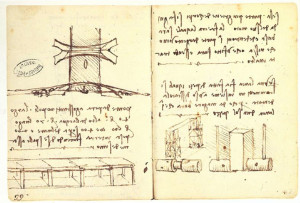
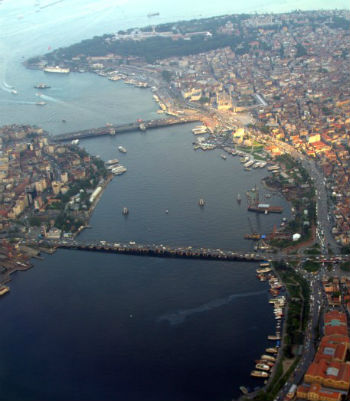
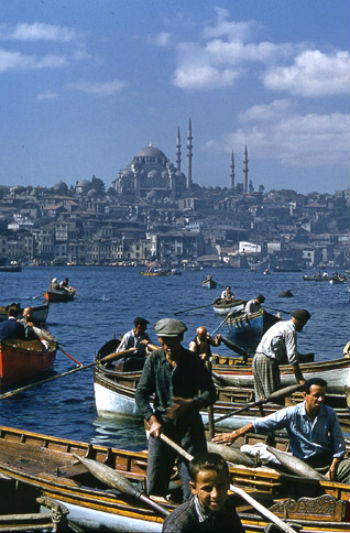
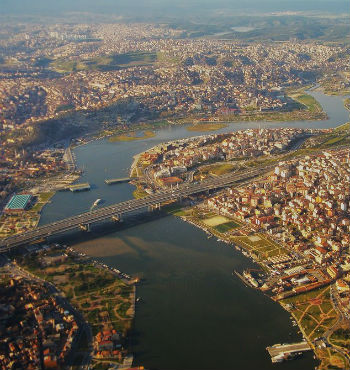
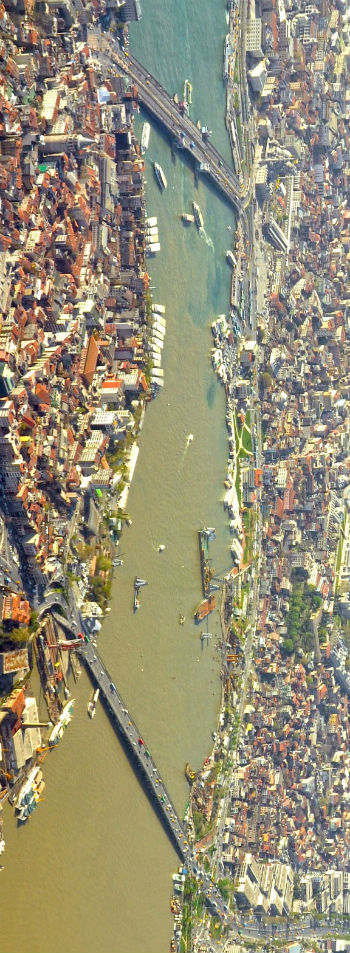


I was just strolling around this place and saw how beautiful it was then I decided to take the ferry and had a ride…
It was a great experience as the breathtaking view of Marmara sea with its colorful banks filled with majestic mosque, palace and landmarks will feast your eyes. Forgot how much the ticket cost but I think…
Try and get seats on the top deck at the front. We did; well worth it, and take the time to listen to the commentary, you will learn so much. A different meaning for Ho-Ho! Hop on,Hop off. Definitely a trip worth doing. Combine it with the Blue route and the Night tour and you've had a chance to see…
If you don't have time for the full Bosphorus cruise, you can use this inexpensive commuter ferry and enjoy seeing some of Istanbul from the water. Easy to get off when you want and get another ferry going back. Recommended.
You can take the local ferry from Eminonu along the Golden Horn as far as Eyüp – where there's an important Mosque and cemetery, and a cable car up the hill. On the way, the ferry makes 5 or 6 stops, and takes around 35 minutes.
When come to Istanbul you just must see it! The best view is from Camlica Tepe- you can have a full view on Golden Horn. It is really fantastic to see the sun lights dancing on the Bosforus and making this Golden Horn ilusion 🙂
In early evening, take the local ferry from Eminonou up the Golden Horn to the Eyup overlook. For a cheap fare you crisscross your way as the sun sets and the great Mosques above are illuminated.
To See the Golden Horn walk across the Galata Bridge. There you will find fisherman – night and day, fantastic views – sunset and evening are the best times and you will be standing at the center of the Golden Horn.
The view is great but unless you want to be harassed by the employees of the cafes on the lower level, avoid it. You can rent fishing poles and gear atop the bridge and fish! (But don't expect to bring in any large trophy fish, they're all small) 🙂
Nice view over Istanbul, but we could have walked to the bottom and had a nice Turkish coffee by time we got there via the slow gondola.
watch a sunset from the bridge. go to Pierre Loti Cafe and get a view of a good portion of the Golden Horn